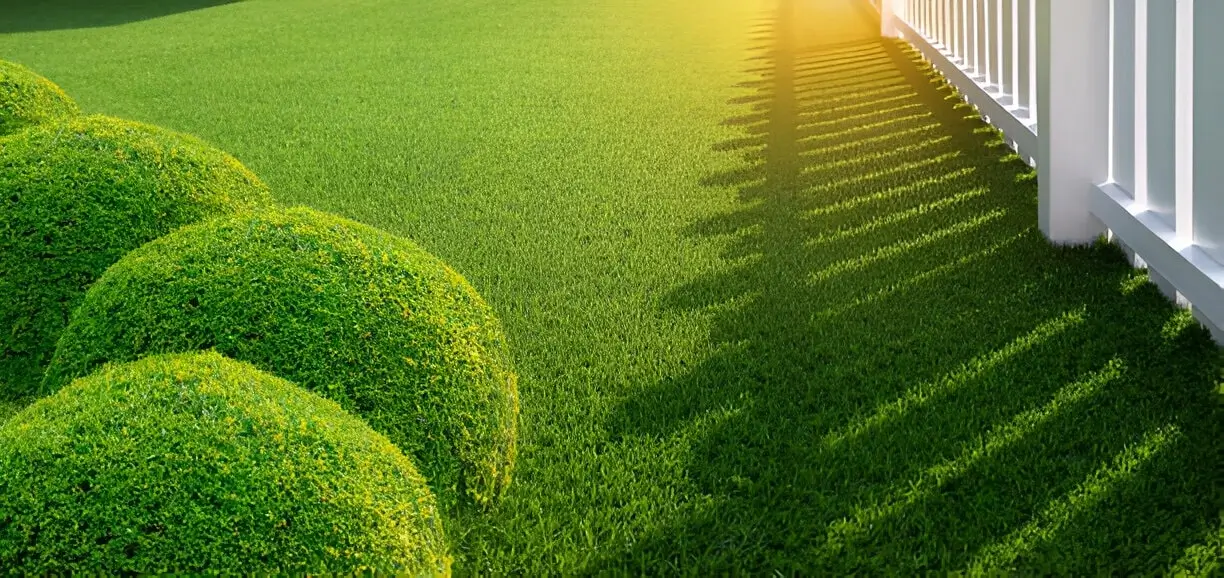Artificial grass is a fantastic solution for homeowners and businesses looking for a low-maintenance, evergreen lawn that stays vibrant year-round. However, in regions that experience extreme heat, artificial turf can sometimes be affected by radiant heat and reflected sunlight, leading to potential damage. While this issue is relatively uncommon, it’s essential to be aware of its causes and take proactive steps to prevent any harm to your lawn. This guide will help you understand the sources of radiant heat damage and offer practical solutions to ensure your artificial grass remains in perfect condition for years to come.
Understanding Radiant Heat and Its Effect on Artificial Grass
Radiant heat is the direct transfer of heat from a source, such as the sun, onto an object. Artificial grass is designed to withstand high temperatures, but when certain materials around your lawn reflect and concentrate sunlight onto the grass, it can raise the surface temperature significantly. In some cases, this intense heat can cause slight melting or distortion of the grass fibers, making the affected area look different from the rest of the lawn.
Unlike natural grass, which has moisture content to help regulate its temperature, synthetic grass absorbs and retains heat differently. Although this heat retention does not usually cause problems, excessive exposure to reflected heat from specific surfaces can create overly hot spots that may alter the texture and appearance of the grass.
Common Sources of Reflective Heat
To effectively prevent radiant heat damage, it is crucial to identify the common sources of reflective heat that might be impacting your artificial grass. Some of the most frequent culprits include:
- Low-E Glass Windows: Low-emissivity (Low-E) windows are designed to improve energy efficiency by reflecting heat away from a home’s interior. However, this can unintentionally direct and concentrate sunlight onto your artificial lawn, significantly increasing the temperature in localized areas.
- Glass Pool Fencing: Transparent glass fencing around pools is an elegant and modern addition to any yard. However, it can also reflect sunlight directly onto your synthetic grass, creating hot spots that might affect its integrity.
- Metal Fences and Siding: Metal surfaces, including fences, sheds, and siding, can amplify and reflect sunlight, causing the surrounding artificial turf to become much hotter than the rest of the lawn.
- Light-Coloured Walls and Pavements: Brightly painted or light-colored walls, concrete surfaces, and tiled areas can reflect sunlight more than darker surfaces, directing heat onto adjacent artificial grass.
- Mirrors and Other Reflective Surfaces: Outdoor decorative mirrors, polished outdoor furniture, and reflective ornaments can concentrate sunlight onto your lawn, leading to heat buildup in certain areas.
How to Prevent Radiant Heat Damage
While radiant heat damage is rare, taking preventive measures can help ensure your artificial grass remains in excellent condition. Here are several strategies to minimize the risk:
1. Install Shade Structures
Adding shade structures such as pergolas, shade sails, or retractable awnings can help diffuse direct sunlight and reduce the intensity of reflected heat on your lawn. These structures not only protect your artificial grass but also enhance the comfort of your outdoor space.
2. Apply Window Films or External Screens
If you have Low-E windows that reflect heat onto your lawn, consider installing anti-glare window films or external mesh screens. These can significantly reduce the intensity of reflected sunlight and minimize heat buildup on your synthetic grass.
3. Use Heat-Resistant Artificial Grass
Some artificial grass varieties are designed with heat-resistant properties to withstand high temperatures more effectively. Speak to your supplier about heat-resistant options that are better suited for hot climates.
4. Plant Trees, Shrubs, or Install Decorative Barriers
Strategic landscaping can act as a natural shield against reflected heat. Planting trees, hedges, or even setting up decorative wooden screens can create a barrier that prevents direct sunlight from reflecting onto your lawn. This also enhances the aesthetics of your outdoor space.
5. Reposition Reflective Surfaces
If possible, adjust or reposition outdoor mirrors, glass pool fences, or other highly reflective objects that might be intensifying sunlight onto your artificial grass. Simple changes, like angling mirrors away from your lawn, can make a significant difference.
6. Use Artificial Turf Protectors
Some synthetic turf protectors or specialized coatings can be applied to artificial grass to help resist heat absorption. These solutions can be particularly useful in high-risk areas where radiant heat reflection is an ongoing concern.
7. Keep an Eye on Your Lawn for Early Signs of Heat Damage
Regularly inspect your artificial grass for signs of heat damage, such as discoloration, melting, or distortion in specific areas. Identifying the problem early allows you to take preventive measures before any permanent damage occurs.
What to Do If Your Artificial Grass Gets Heat Damage
In the rare event that a small section of your artificial grass experiences heat damage, it’s important to know how to address the issue. If the damage is minor, brushing the affected area with a stiff broom can sometimes help redistribute and blend the fibers. For more noticeable damage, the affected section can be carefully cut out and replaced with a matching piece of artificial turf. Professional installers can seamlessly integrate the repair to ensure it blends with the rest of the lawn.
Final Thoughts
Radiant heat damage on artificial grass is uncommon, but it’s always best to be proactive in preventing it. By understanding the sources of reflective heat and taking the necessary precautions, you can maintain a flawless, long-lasting artificial lawn. Simple solutions like adding shade, applying window films, and using landscaping elements to deflect heat can help keep your synthetic turf looking vibrant and damage-free for years to come.
If you’re considering installing artificial grass or have concerns about radiant heat, our expert team at Jay’s Synthetic Grass is here to assist. Contact us today for professional advice, installation services, and high-quality artificial grass products designed to withstand the toughest conditions.
Learn more about how to install artificial grass and other mistakes to avoid while installing artificial grass


